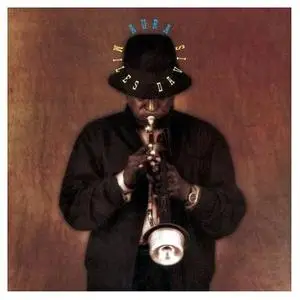Aura - Miles Davis
mp3 | 128 kBits | 44 KHz | Rapidshare & Depositfiles | 63 MB
Jazz / Poprock
mp3 | 128 kBits | 44 KHz | Rapidshare & Depositfiles | 63 MB
Jazz / Poprock
1. Intro
2. White
3. Yellow
4. Orange
5. Red
6. Green
7. Blue
8. Electric Red
9. Indigo
10. Violet
2. White
3. Yellow
4. Orange
5. Red
6. Green
7. Blue
8. Electric Red
9. Indigo
10. Violet
Personnel:
Miles Davis (trumpet); Eva Thaysen (vocals); Jesper Thilo, Per Carsten, Uffe Karskov, Bent Jaedig, Flemming Madsen (saxophone, woodwinds); Palle Mikkelborg, Benny Rosenfeld, Palle Bolvig, Jens Winther, Perry Knudsen, Idrees Sulieman (trumpet, flugelhorn); Vincent Nilsson, Jens Engel, Ture Larsen (trombone); Axel Windfeld (bass trombone, tuba); Ole Kurt Jensen (bass trombone); Niels Eje (oboe); Lillian Tbernqvist (harp); Thomas Clausen, Ole Koch-Hansen, Kenneth Knudsen (keyboards); John McLaughlin, Bjarne Roupe (guitar); Niels-Henning Orsted Pedersen (acoustic bass); Bo Stief (electric & fretless basses); Lennart Gruvstedt (drums); Vince Wilburn (electronic drums); Marilyn Mazur, Ethan Weisgaard (percussion).
Recorded at Easy Sound Studios, Copenhagen, Denmark in 1984.
In 1984, as his covers of tunes such as "Time After Time" exposed him to a new generation of pop fans, Miles Davis participated in one of the most ambitious recordings of his career. Trumpeter Palle Mikkelborg created several themes related to the composer's perception of Miles' field of musical colors–his AURA, so to speak–and Miles performed it with a Danish studio orchestra in Copenhagen. Clearly influenced by Miles' collaborations with Gil Evans, AURA reflects the trumpeter's profound influence on European schools of jazz, and showcases some of Miles most searching, exploratory solos of the decade.
A huge orchestral chord and screaming electric guitar define the general tonality of "Intro," setting up a dancing exchange between Miles and guitarist John McLaughlin over a fragmented cycle of brass rhythmic accents. Miles trumpets "White" with a simple folkish theme, almost a shepherd's song, adding expressive echo effects as the tonality splits into component pigments, and a plaintive oboe floats above a dissonant wash of synthesizer and organ. Harp and oboe extend this theme in an almost serial manner on "Yellow," as electric guitar signals tense counterpoint between descending clarions of trumpets and dreamy bellows of low brass.
John McLaughlin's fleet fingered, bluesy lines signal the loping Milesian funk of "Orange," with its ding-dongy release and Miles' feathery fluttering mute work and celebratory open horn, while "Red" explores a contrasting flamenco-style mode at a spooky slow grind as Miles doubles up on top. Davis' blossoming horn and Niels Pedersen's expressive acoustic bass expand on the drone with "Green." "Blue" finds Miles dancing on top of a spacey reggae groove, then crossfades from layered keyboards into a deep brass and woodwind choir, ending with a children's theme amidst harp and calliope sounds. "Electric Red" reprises the slow Spanish dances of "Red" with added orchestral color and an insistent fuzz guitar vamp, while "Indigo" suggests the free jazz, multi-tempoed mannerism of his Corea/Holland/DeJohnette juggernaut (circa MILES AT FILLMORE), fired along by pianist Thomas Clausen's agitated lyricism. And in conclusion, John McLaughlin's fervent electric guitar ushers a reflective Miles through the final stately blues pirouettes of "Indigo."
Download:
Pass: minblog



